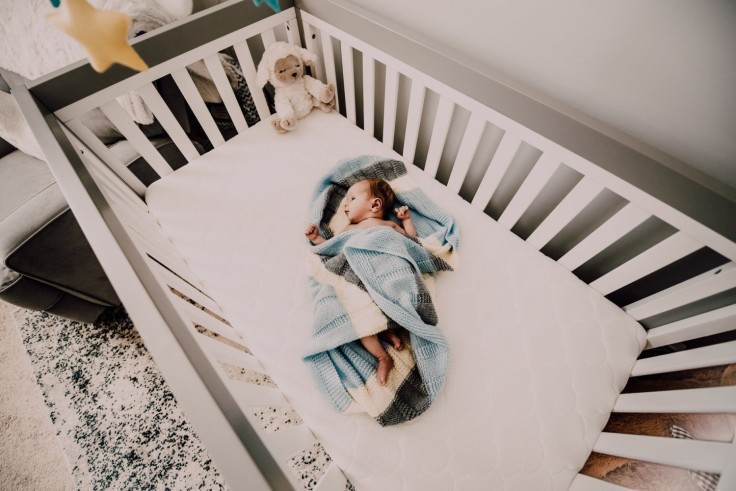
Whether you are still pregnant and are still setting up the nursery for your baby, or your baby has already arrived, you are probably thinking about how your baby will sleep.
You want your child to sleep soundly so that you can get some rest as well, but it is also important to make sure that your child sleeps safely. Experts know that smart sleep practices can help protect babies from SIDS, or Sudden Infant Death Syndrome, so it is important for every new parent to become familiar with these safety tips.
Share a room, but don't share a bed
Having your child sleep in your room for at least the first six months and ideally up to a year can help lower the risk for SIDS. And keeping your child close by makes for easier nighttime feedings. However, you should avoid letting your child sleep in your bed. Always keep your child in his or her own crib or bassinet, since your bed's pillows or blankets can be dangerous for the baby.
Create a safe sleep environment
Adding old cloths and toys to the nursery is fine, but you should choose a new bassinet, crib or play yard that meets the current CPSC or Consumer Product Safety Commission guidelines. Do not use older ones because they might be broken or they may not be up to the current safety standards.
Your baby should sleep in a firm crib mattress with a tight-fighting sheet. Do not use any memory foam mattresses, and also make sure that there are no gaps between the mattress and the wall of the bassinet, crib or the play yard.
The sleep space of your baby should be free from accessories including pillows, comforters, crib bumpers, mattress toppers, wedges and stuffed animals, even if they are all marketed to reduce the risk of SIDS. Also, check for strangulation hazards such as baby monitor wires or curtain cords.
Depsite what you may have heard, you do not have to use a fan. Some older finding suggested that fans could help keep the room ventilation in your baby's room better and it can help reduce the risk of SIDS. But there is not enough evidence to back it up and to show that it is effective for preventing SIDS.
Don't rely on baby monitors
Do not rely entirely on baby monitors, even cardiorespiratory monitors that alerts you when there are changes in your baby's breathing at night. They have not been proven to protect against SIDS. A monitor is good for checking on baby, but you still need to peek in at your baby yourself to make sure that everything is okay. Monitors are not a substitute for checking on your child during the night.
Why do babies need to sleep on their backs?
Your child might fuss more when you put her to sleep on her back but it is the safest sleep position for SIDS prevention according to experts. While sleeping on their tummy might be cozier for your baby, it can cause him or her to sleep deeply, thus making it harder for him or her to wake up if his or her breathing gets interrupted. That can increase the risk of suffocation.
SIDS is the sudden death of an apparently healthy infant and although it is not something that any parent ever wants to go through and think about, it is still best knowing more about SIDS can help you keep your child safe.
Sudden Infant Death Syndrome can happen to babies that are under 4 to 6 months, with most of the cases happening to babies under 6 months. Experts do not fully understand what causes SIDS but unsafe sleep environments that suffocate or strangle babies are known to play a major role. By creating a safe sleeping space for your child, you can significantly reduce his or her risk of SIDS.